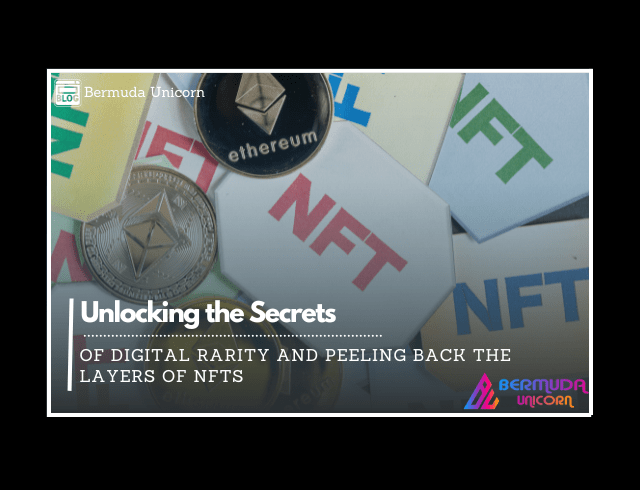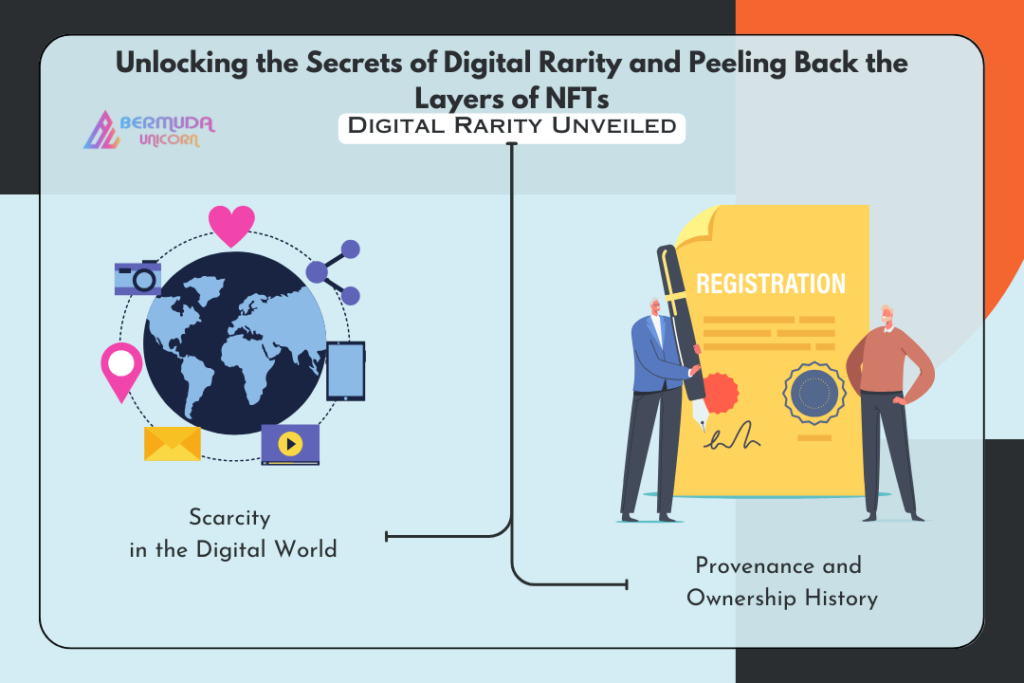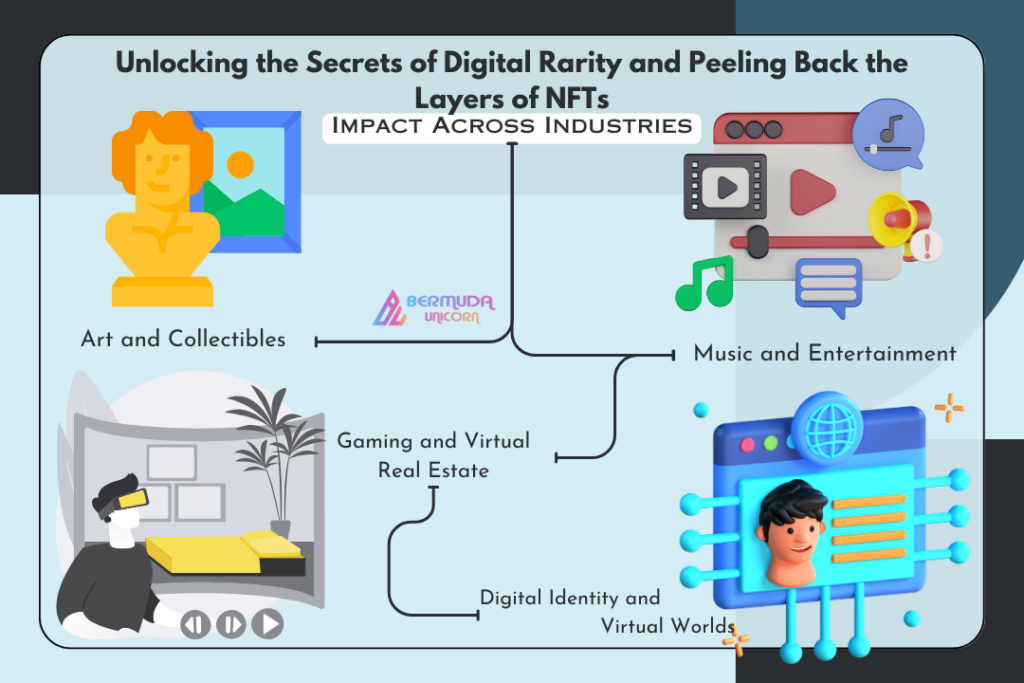![]()

In the digital age, where everything seems to be replicable with a click, Non-Fungible Tokens (NFTs) have emerged as a groundbreaking technology that enables the creation and recognition of digital rarity. NFTs are digital certificates of ownership stored on a blockchain, and they have taken the world by storm, revolutionizing how we perceive and interact with digital assets. In this blog, we’ll delve into the fascinating world of NFTs, exploring what makes them unique, their impact on various industries, and how they are unlocking the secrets of digital rarity.
Understanding NFTs: Beyond the Hype
What Are NFTs?
NFTs are cryptographic tokens that represent ownership of a unique item or piece of content, such as digital art, collectibles, music, virtual real estate, and even tweets. Unlike cryptocurrencies like Bitcoin or Ethereum, NFTs are non-fungible, meaning each one is distinct and cannot be exchanged on a one-to-one basis.
The Power of Ownership
NFTs grant digital ownership in a way that was previously inconceivable. They are built on blockchain technology, which ensures the authenticity, provenance, and scarcity of digital assets. But, in essence, NFTs provide a means to prove that you own a unique piece of the digital realm.
Digital Rarity Unveiled

Scarcity in the Digital World
One of the core principles behind NFTs is scarcity. Scarcity, which has long been a driver of value in the physical world, can now be applied to digital assets. Also, NFTs introduce the concept of digital rarity by limiting the number of copies or editions of a digital item, making it inherently valuable.
Provenance and Ownership History
Blockchain technology tracks the ownership history of NFTs, ensuring a transparent and immutable record of who owns a particular digital asset. But, this not only proves ownership but also enhances the asset’s value, especially when tied to renowned creators or historical significance.
Impact Across Industries
Art and Collectibles
NFTs have ushered in a new era for digital art and collectibles. Artists can tokenize their work, and collectors can purchase and trade NFTs representing ownership of these digital masterpieces. This has led to a democratization of the art world. Also, artists can directly reach their audiences without traditional gatekeepers.
Music and Entertainment
Musicians and entertainers are leveraging NFTs to release exclusive content, offer backstage passes, and establish unique fan experiences. And also NFTs are revolutionizing the way we consume media, providing direct engagement between creators and fans.
Gaming and Virtual Real Estate
In the gaming industry, NFTs are used to create unique in-game items, characters, and virtual real estate. Players can truly own and trade these digital assets, also blurring the lines between the virtual and physical worlds.

Digital Identity and Virtual Worlds
NFTs are at the forefront of the movement to establish self-sovereign digital identities and virtual worlds. Individuals can own and control their online personas, assets, and even pieces of virtual land within these metaverse-like environments.
NFT Markets and Platforms
Leading NFT Marketplaces
Prominent NFT marketplaces, such as Bermuda Unicorn, have become hubs for NFT trading. These platforms offer a wide array of NFTs, from digital art to virtual real estate.
Creating and Minting NFTs
Artists and creators can mint NFTs, essentially creating them and associating them with a digital asset. This process typically involves smart contracts and blockchain technology to ensure the uniqueness and ownership of the NFT.
FAQs: Demystifying NFTs and Digital Rarity
1. What gives NFTs their value?
– NFTs derive value from their digital rarity, scarcity, and ownership history recorded on the blockchain. The uniqueness and provenance of the digital asset play a significant role in determining its value.
2. Can I create an NFT for any digital content?
– In theory, yes. You can create an NFT for various digital content, including art, music, videos, tweets, and virtual real estate. However, the value and demand for your NFT may vary depending on the content’s uniqueness and appeal.
3. How do I purchase NFTs?
– To purchase NFTs, you typically need a digital wallet with cryptocurrency (usually Ethereum). You can then browse NFT marketplaces, place bids or make direct purchases, and store your NFTs in your wallet.
4. Can I sell my NFT after purchasing it?
– Yes, NFTs are transferable and can be sold on NFT marketplaces or through peer-to-peer transactions. The value of an NFT can fluctuate based on demand and its perceived rarity.
5. Are NFTs only about digital art and collectibles?
– No, while digital art and collectibles are popular categories, NFTs have applications in various industries, including music, gaming, virtual real estate, and digital identity.
Conclusion
NFTs have opened up a new frontier in the digital world, challenging our perceptions of ownership and rarity. They are not just tokens; they are keys to unlocking the secrets of digital rarity and provenance. As NFTs continue to disrupt traditional industries and redefine how we value digital assets, the possibilities are limitless, and the digital landscape is evolving into a realm of truly unique and owned experiences. Whether you’re an artist, collector, or enthusiast, the NFT revolution is inviting you to explore and shape the future of digital ownership.
